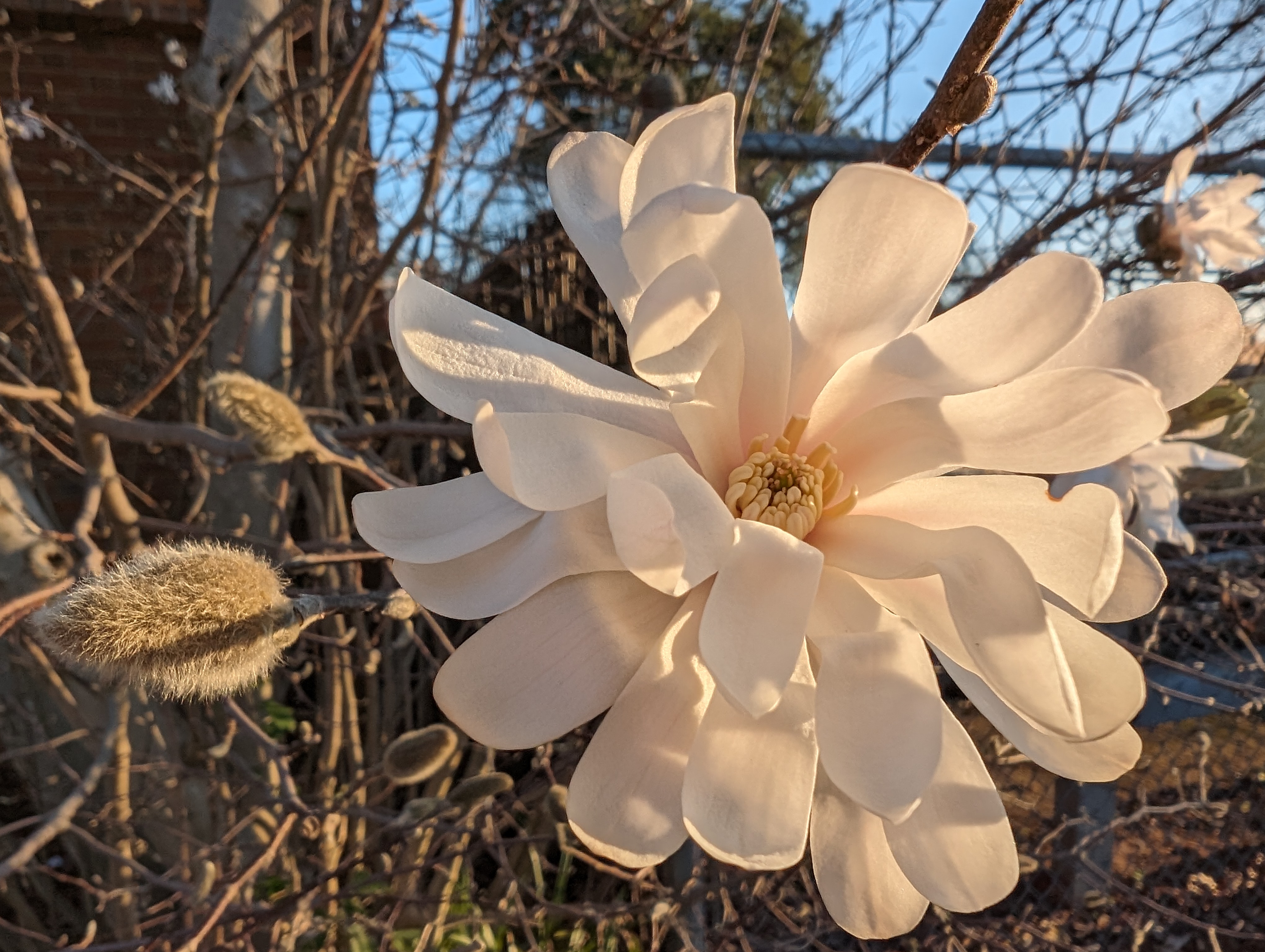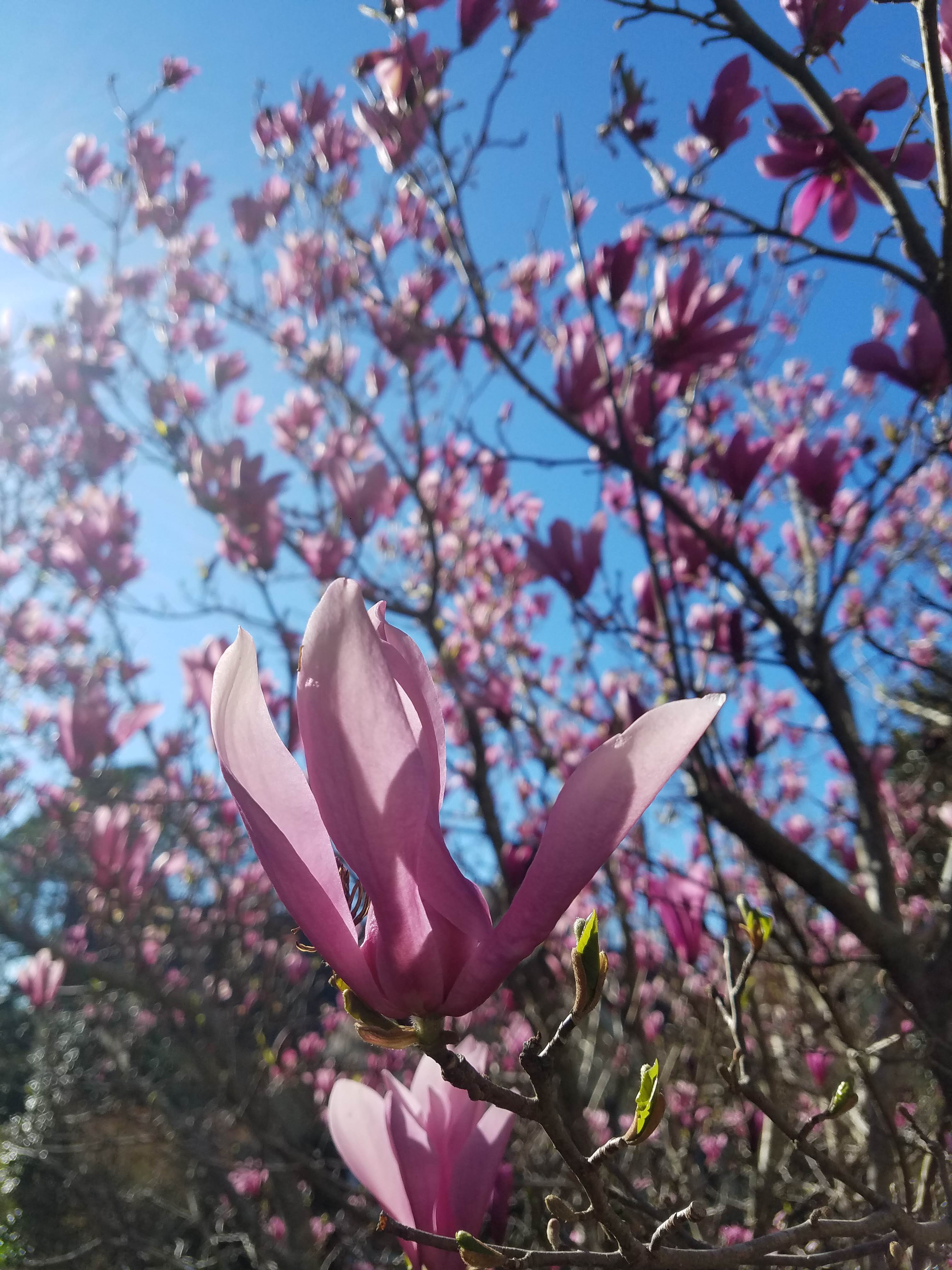Floating Saucers- the Gift of Winter-Flowering Magnolias
go.ncsu.edu/readext?992554
en Español / em Português
El inglés es el idioma de control de esta página. En la medida en que haya algún conflicto entre la traducción al inglés y la traducción, el inglés prevalece.
Al hacer clic en el enlace de traducción se activa un servicio de traducción gratuito para convertir la página al español. Al igual que con cualquier traducción por Internet, la conversión no es sensible al contexto y puede que no traduzca el texto en su significado original. NC State Extension no garantiza la exactitud del texto traducido. Por favor, tenga en cuenta que algunas aplicaciones y/o servicios pueden no funcionar como se espera cuando se traducen.
Português
Inglês é o idioma de controle desta página. Na medida que haja algum conflito entre o texto original em Inglês e a tradução, o Inglês prevalece.
Ao clicar no link de tradução, um serviço gratuito de tradução será ativado para converter a página para o Português. Como em qualquer tradução pela internet, a conversão não é sensivel ao contexto e pode não ocorrer a tradução para o significado orginal. O serviço de Extensão da Carolina do Norte (NC State Extension) não garante a exatidão do texto traduzido. Por favor, observe que algumas funções ou serviços podem não funcionar como esperado após a tradução.
English
English is the controlling language of this page. To the extent there is any conflict between the English text and the translation, English controls.
Clicking on the translation link activates a free translation service to convert the page to Spanish. As with any Internet translation, the conversion is not context-sensitive and may not translate the text to its original meaning. NC State Extension does not guarantee the accuracy of the translated text. Please note that some applications and/or services may not function as expected when translated.
Collapse ▲I love driving around Lee County and looking at what folks are growing in their yards. Our winter in 2024 has been forgivingly consistent, which has set the stage for a late winter bloom we haven’t seen in many years. Our winter-flowering plants need consistently cooler temperatures in order to flower the best they can, and when we get those 80 degree days or stretches of days above 70 degrees, it really messes with their internal clocks. But, 2024 has been good and we are able to bask in the splendors of saucer Magnolias right on time in March!
Purple and Pink Saucer Magnolias- Magnolia x soulangeana
The pink and purple saucer Magnolias are stunning this year. The pinks and purples are derived from complex hybrids of Magnolia x soulangeana, a handmade cross of M. denudata × M. liliiflora, which has been in cultivation for more than two hundred years. There are dozens of cultivars, cultivated varieties, available these days, such that there is a size, shape and color of Magnolia for every taste. Most varieties are small to medium, multi-trunked trees (10-30 ft tall, 10-20 ft wide) with a vase-like, arching architecture. Unfortunately, if we get a warm spell, these can be tricked into breaking bud, and then they can be nipped by a dip back into freezing weather. If you like pink or purple and need that shock of spring color, this is the one for you.
White Star Magnolias- Magnolia stellata and Magnolia x loebneri
The white star Magnolias are more subtle in their coloration, but not in their flower show! This group tends to herald the beginning of the Magnolia bloom season and the shift from mid- to late-winter. They are small, multi-trunked trees with an oval architecture. The hundreds of fuzzy flower buds are borne at the ends of the branches and slowly unfold as those invisible seasonal cues are given. The ground can look like snow when the petals start to fall. The flower show is much more tolerant of late-season warm to cold snaps.
the shift from mid- to late-winter. They are small, multi-trunked trees with an oval architecture. The hundreds of fuzzy flower buds are borne at the ends of the branches and slowly unfold as those invisible seasonal cues are given. The ground can look like snow when the petals start to fall. The flower show is much more tolerant of late-season warm to cold snaps.
Yellow Magnolias- Magnolia acuminata hybrids
Did you know that there are yellow-flowered deciduous Magnolias? They are hybrids between our North American native Magnolia acuminata, or cucumber tree, and the horticultural hybrids of purple and pink flowers. Sometimes they are referred to as M. x brooklynensis, as they were created at the Brooklyn Botanic Garden in New York. Some of the cultivars are pale yellow, some butter yellow, and some have blushes of pink or purple. My favorite is Magnolia ‘Judy Zuk’, named for the late president of the Brooklyn Botanic Garden, because of its deep butter yellow and brush stroke of dark purple. Their architecture is very similar to the purple and pink varieties, getting 20-30 ft tall, 10-20 ft wide.
Growing Conditions You Need to Add One to Your Garden
Winter-flowering Magnolias are deciduous, meaning they drop their leaves in the fall. They have a yellow to orange fall color. We have ideal soil conditions for growing deciduous Magnolias in Lee County. To get optimum flowering, make sure the trees  are located in full- to part-shade conditions and get some protection from winter winds. They love acidic, well-drained soils; but they do like to have moisture as well, especially during times of drought in the late summer and fall. Just don’t plant them in an area where water collects. They don’t mind our winters, but prefer consistent cool in the winter to flower at their maximum show. If it gets too cold the flower buds will be frozen and fall off in favor of leaf buds. You get about two weeks of flowers during an ideal year. Some varieties will put on a few flowers in the summer, as well. Most do not need pruning, except for some training pruning and pruning branches for access under the canopy, if needed at all.
are located in full- to part-shade conditions and get some protection from winter winds. They love acidic, well-drained soils; but they do like to have moisture as well, especially during times of drought in the late summer and fall. Just don’t plant them in an area where water collects. They don’t mind our winters, but prefer consistent cool in the winter to flower at their maximum show. If it gets too cold the flower buds will be frozen and fall off in favor of leaf buds. You get about two weeks of flowers during an ideal year. Some varieties will put on a few flowers in the summer, as well. Most do not need pruning, except for some training pruning and pruning branches for access under the canopy, if needed at all.
If you have space for one and need a pop of color during the doldrums of late winter, saucer Magnolias are the plant for you! It is a fairly low-maintenance tree for a lot of personality, and many local nurseries carry a variety of them.
Amanda Wilkins is the Horticulture Agent for North Carolina Cooperative Extension in Lee County.




